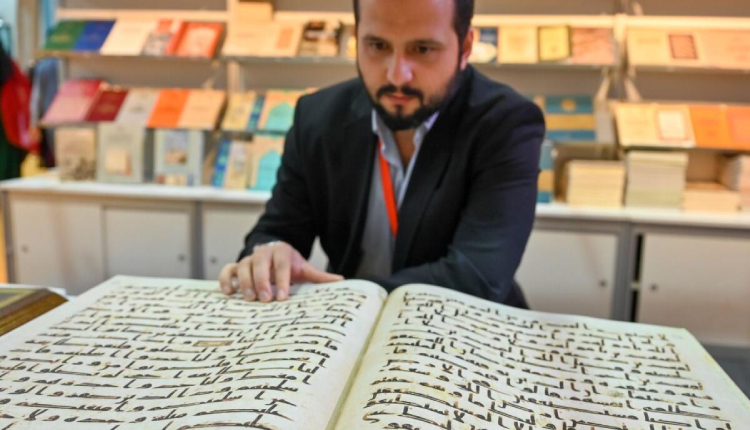A copy of the Topkapi Quran dating back to the second century of the Islamic Hijri calendar, or eighth century of the Gregorian calendar, is on sale at the Sharjah International Book Fair (SIBF).
The Topkapi Palace Museum in Istanbul, Türkiye, holds the manuscript, which is credited to third caliphate Uthman Ibn Affan (656 AD), said Taha Zahid Özdemir, from the Research Centre for Islamic History, Art and Culture (IRCICA), Turkey.
Özdemir said, “we are showcasing one of the oldest Qurans, the original copy from Topkapi Palace Museum. As this is the copy from the original one, therefore, it is of high quality.”
“This Quran is sponsored by none other than His Highness Sheikh Dr Sultan bin Muhammad Al Qasimi, Supreme Council Member and Ruler of Sharjah,” he added.
There is a number of these unique copies of the Quran across the world with one in Istanbul, one in Uzbekistan, one in Cairo, and one at the London Museum, he explained.
According to Özdemir, history has it that Egypt’s Muhammad Ali Pasha sent this manuscript to the Ottoman Sultan Mahmud II as a gift in the 19th century.
Comparable illuminations can be observed in the Palestine’s Dome of the Rock in Jerusalem, the Umayyad Mosque in Damascus, and other Umayyad structures.
An analysis of the Topkapı Quran showed that it was penned by an evolved Kufic script.
“The letter shapes do not align with the writing style found in the early Mushafs ascribed to Caliph Uthman, which were inscribed on vellum (animal skin or membrane) during his era,” Özdemir explained.
“It appears that the method introduced by Abu al-Aswad al-Du’ali which may have been created after Caliph Uthman’s passing, was meticulously followed when adding vowel marks to the Topkapı Palace copy. Red ink single dots were placed above, beside, or below the letters,” he added.
